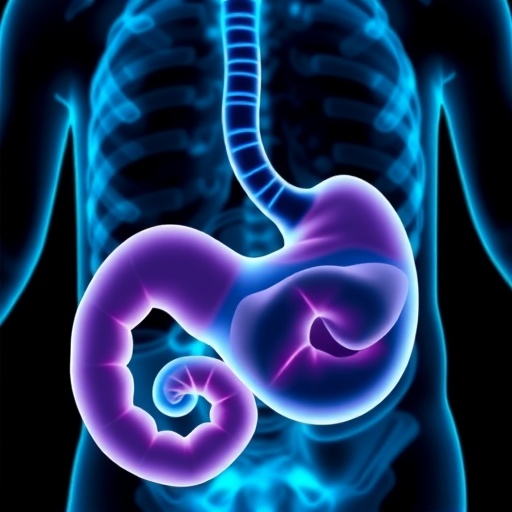Endoscopic retrograde cholangiopancreatography (ERCP) has emerged as a pivotal procedure in the management of biliary conditions, particularly in pediatric patients facing biliary dilatation. Recent studies, including a comprehensive retrospective multicenter analysis led by Ding et al., emphasize the significance of this intervention and its implications for improving outcomes in younger cohorts. This innovative approach aims to alleviate biliary obstruction and enhance the overall quality of life for children grappling with these challenges.
In the realm of pediatric gastroenterology, biliary dilatation can present a myriad of complications, ranging from cholangitis to pancreatitis. The traditional methods of managing these conditions may not always yield favorable results in young patients, making ERCP a compelling alternative. This minimally invasive procedure allows for direct access to the biliary tree, facilitating both diagnostic and therapeutic interventions. The compelling aspect lies in its dual capability: ERCP can be utilized to visualize the bile ducts and perform necessary interventions simultaneously.
The retrospective multicenter study explored the outcomes of ERCP in a diverse cohort of pediatric patients. By analyzing data from multiple institutions, the researchers aimed to establish a more generalized understanding of the procedure’s efficacy and safety in treating biliary dilatation. The results indicated a noteworthy success rate, highlighting ERCP’s potential as a first-line treatment option for this vulnerable population. The authors meticulously documented patient outcomes, focusing on both immediate and long-term effects.
One of the cornerstones of the study’s findings is the decreased need for subsequent interventions following successful ERCP. The data revealed that in cases where biliary dilatation was effectively addressed, there was a marked reduction in complications and the need for invasive procedures. This finding solidifies the argument for early intervention through ERCP, potentially forestalling further health issues related to biliary obstruction.
However, the study did not shy away from discussing the challenges and risks associated with ERCP in pediatric patients. These may range from procedural complications, such as pancreatitis, to more severe risks, including perforation. The authors addressed the importance of careful patient selection and preparation to mitigate such risks. This aspect of the analysis is crucial as it provides valuable insights into optimizing patient outcomes while minimizing procedural risks.
Furthermore, the findings from Ding et al. elucidate the importance of a multidisciplinary approach in managing pediatric biliary dilatation. Pediatric gastroenterologists, surgeons, and anesthesiologists must collaborate closely to ensure the best possible outcomes. Such teamwork enables the comprehensive care that children require, addressing not just the technical aspects of ERCP but also the pre-and post-procedural needs of young patients.
Despite the promising results, the authors also acknowledged the need for further research. While the retrospective nature of the study provides a wealth of information, prospective studies are vital to confirm the long-term efficacy and safety of ERCP in pediatric biliary conditions. Future research endeavors could explore optimal protocols, patient demographics, and procedural techniques that would maximize the benefits of ERCP.
As the medical community continues to shift towards evidence-based practices, studies like this one play a crucial role in guiding clinical decision-making. The incorporation of findings from multicenter studies contributes to a more nuanced understanding of patient management strategies in pediatric gastroenterology.
Additionally, the implications of this research extend beyond immediate clinical practices. They prompt a broader conversation about the advancements in endoscopic techniques and their potential to reshape the landscape of pediatric care. With technology rapidly evolving, the prospects of refining ERCP procedures could further enhance their safety and efficacy for children in the future.
In conclusion, the retrospective multicenter study conducted by Ding et al. represents a significant contribution to pediatric gastroenterology literature. The study not only underscores the effectiveness of ERCP for biliary dilatation treatment but also raises critical considerations about procedural safety and multidisciplinary collaboration. As researchers continue to explore the frontiers of medical science, the insights gained from such studies will undoubtedly influence future clinical practices and improve the lives of pediatric patients worldwide.
The recognition of ERCP as a reliable intervention for biliary dilatation in children epitomizes a vital step forward, merging innovative techniques with compassionate care. Future advancements in equipment, techniques, and patient management strategies will only serve to bolster confidence in ERCP’s role in pediatric gastroenterology. As evidence mounts, healthcare providers are better equipped to make informed decisions, ensuring that young patients receive the most effective and safest care possible.
In summary, ERCP has secured its place as an essential tool in the management of biliary dilatation in pediatric populations, as demonstrated by the compelling findings of this study. The continuous evolution of this procedure promises to reap further benefits, and ongoing research will undoubtedly illuminate new possibilities in the treatment and management of biliary disorders in children.
Subject of Research: Pediatric biliary dilatation treatment using ERCP
Article Title: Endoscopic retrograde cholangiopancreatography treatment for biliary dilatation in pediatric patients: a retrospective multicenter study
Article References:
Ding, S., Zeng, JQ., Deng, ZH. et al. Endoscopic retrograde cholangiopancreatography treatment for biliary dilatation in pediatric patients: a retrospective multicenter study.
BMC Pediatr 25, 660 (2025). https://doi.org/10.1186/s12887-025-06047-z
Image Credits: AI Generated
DOI:
Keywords: ERCP, biliary dilatation, pediatric gastroenterology, intervention, multicenter study, safety, efficacy, complications, treatment.




